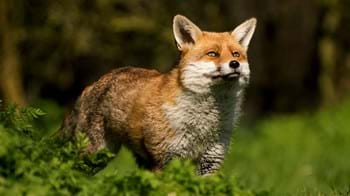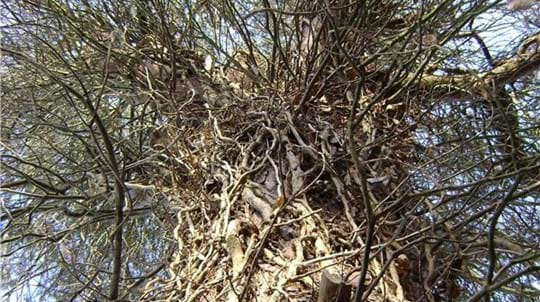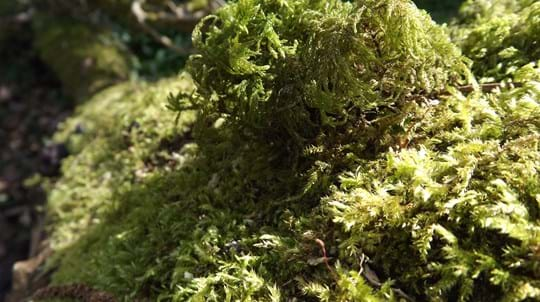
Greyfield Wood
High Littleton NE Somerset

Woodland Trust wood
36.23 ha (89.52 acres)
ST636583
Explorer 142
OS Landranger 172
The charming mix of ancient woodland and newer planting at Greyfield Wood was once part of the Earl of Warwick’s hunting estate.
Visit to enjoy the wide range of broadleaf species, wonderful wildlife and extensive paths to explore.
Features
- Parking at site
- Public access
- Autumn colour
- Spring flowers
How to get to Greyfield Wood
The 36-hectare (90-acre) Greyfield Wood is on the outskirts of the village of High Littleton in north-east Somerset. It is around 16km (10 miles) from Bath and just over 19km (12 miles) from Bristol.
The car park is currently very busy. It only has a small car with capacity of 10 cars. Please avoid visiting during peak times /
holidays and ensure you adhere to the governments social distancing guidelines.
From the A37 (Bristol Road), take the Wells Road (A39) towards High Littleton. Follow the road to the village and turn left into Greyfield Road where you will find the entrance to the wood at the end of the lane on the left.
The nearest railway station is Bath Spa. Buses from the nearby bus station run to High Littleton.
Visit National Rail for more information.
There are two bus stops on the main road through the village, both nearly 1km (0.6 miles) from the wood’s main entrance. Half of this is on pavement (via Greyfield Road), with the remaining distance down an uneven, private lane.
Visit Traveline for more information.
Facilities and access
Greyfield Wood lies west of the village of High Littleton. A public footpath runs south from Greyfield Road, down the private access road to the wood entrance, and then through the wood in a north-to-south direction.
There are two stone-surfaced tracks leading through the woodland and along a circular walk, and there are many unsurfaced rides and paths leading from this. The wood also has several kilometres of permissive paths which link with a well-used footpath network outside the site and the nearby waterfall.
There is a surfaced ride for management too. The heart of the wood is generally level, with steeper slopes around the edges, particularly at the southern boundary. The lower areas can be wet and muddy.
Please note that we are experiencing unusually high numbers of visitors to Greyfield Wood, and the nearby waterfall which is not owned by us.
The car park only has only space for a small number of cars and access is now restricted near-by too.
Please avoid visiting this wood at the moment.
We would love to see you another time. Thank you.
Customers can use the toilets at the Star Inn in High Littleton. The nearest public toilets are at the Red Lion car park, High Street, Paulton, around 8km (5 miles) from Greyfield Wood.
Wildlife and habitats
Animals
Greyfield Wood is designated a County Wildlife Site and is home to fox, badger, rabbit, squirrel, vole, wood mouse, shrew and wild deer – look out for signs of the roe deer.
The wood also supports a large bird population including blue tit, great tit, thrush, tawny owl and woodpecker. Spot buzzards soaring above the canopy. Butterfly species include brimstone, speckled wood and silver-washed fritillary.
Trees, plants and fungi
Most of the woodland at Greyfield is secondary woodland, having been cleared twice for mining.
Habitats
Discover areas of naturally regenerated woodland as well as sweet chestnut plantations in this diverse wood.
We purchased the wood in 1998. It had been planted with conifers in 1960 by the Forestry Commission, but the regenerated woodland had thrived.
About Greyfield Wood
This site was once part of the Earl of Warwickshire's hunting estate. The site has also been used for coal mining; look out for signs of the bell pits and shallow shafts. Many of the pathways were actually mining routes and tramways leading to a colliery.
On your walk, look out for the mysterious dialler stones. They look a bit like headstones. There used to be many more of them in the wood and they are named after mining surveyors who carried dial instruments.
We don't know what the dialler stones were for. Some think they were markers of strategic survey points, some that they mark tree planting, and others that they are grave sites of the Earl or Warwickshire's dogs.

A lasting legacy
This wood is just one of many to have been protected by gifts in wills, securing it for generations to come. Your legacy gift could also make a real difference to woods, trees and wildlife.
Learn what your gift could mean







































